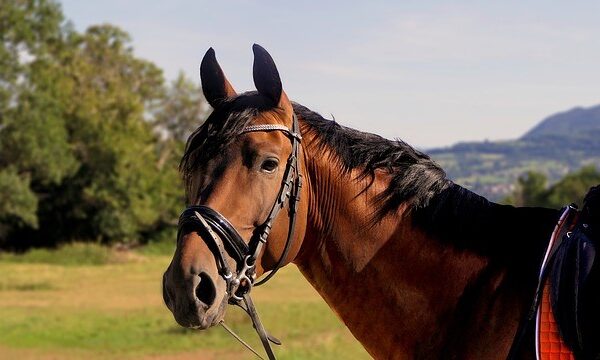Pet parents benefit from physical therapy much the same way as canines benefit from rehabilitation.
Patients enrolled in this program are recuperating from surgeries or injuries, obese pets, and senior dogs with debilitating conditions among others. A rehabilitation program is prepared by an animal therapist to decrease pain and improve function for your pet to get back to their normal activity.
With rehab, pets can enjoy a quality life in their golden years and avoid injury during inactivity.
What Is Canine Rehabilitation?
Canine rehabilitation, or canine physical therapy, is a field of veterinary medicine that focuses on the management and treatment of injuries, pathologies, and functional requirements to decrease pain and improve movement.
The goal is to reach the highest level of fitness, self-reliance, and improve the quality of life of the dog patient.
When you visit a canine rehabilitation specialist, a comprehensive evaluation of Fido will be performed from head to foot. Once the problem has been identified the therapist will develop and implement a plan to bring back your canine to normal condition. Adjustments, if necessary, will be made while working through the treatment plan to ensure that there is progress in every session.
The evaluation includes the patient’s medical record. A pet parent’s participation is vital to the success of the program. They will be oriented about any pathology, outcomes, treatment options, plan of care, and goals.
Importance of Canine Rehabilitation
A certified canine rehabilitation specialist makes educated decisions based on the progress of the ailment or healing at present. Expensive equipment and therapeutic exercises are the last resorts if basic exercises and techniques cannot improve recovery.
Muscle atrophy and loss of strength can result from a one-week inactivity. Effective rehabilitation for rebuilding muscle mass will restore the adequate range of motion.
Cartilage found at the end of long bones carries additional weight and sends an applied pressure to the lower bone. If left unattended, the cartilage becomes dry causing pain, at worse, it can fuse a joint. Some loading workouts are necessary to deliver nutrients and remove toxins from the affected area.
There are myriad instances when rehabilitation is the appropriate remedy to treat medical conditions, some are:
- Post-operative orthopedics
- Tendon and ligament injuries
- Spinal cord injuries
- Gait abnormalities
- Post fractures
- Herniated discs
- Old age degeneration
- Arthritis
- Obesity and poor conditioning
- Muscular degeneration
- Inflammation and swelling
- Genetic disease – hip and elbow dysplasia
5 Tips from a Veterinarian
A good relationship with your vet is the key to a healthy dog and both of you are happy. You can enrol with one of these programs to learn more about how you can take good care of your pet. They will be there to help your pet face any challenges and some vet tips will save time, trauma, and money.
- Regular visits to the vet will alert your doctor to health conditions that can be prevented from becoming a full-blown ailment.
- Unlike humans, pets don’t show signs of pain in dental diseases and will keep eating.
- Consult with your vet before administering medications like Aspirin, Tylenol, Ibuprofen, other over-the-counter anti-inflammatories and decongestants are dangerous and potentially fatal.
- Dogs love snacks, but they will still love you if you cut their munchies for a healthy weight.
- Seek advice from your vet if you notice these oddities from your pet:
- Drinking more than usual
- Frequent urination
- Vomiting
- Abstaining from food
- More time sleeping
- Inactive
- Mushy poop
Physical Rehabilitation for Veterinary Practices
The warp and woof of a successful program is a therapeutic workout. Fundamentally, movement is medicine which affects the whole body. A good animal therapist is highly skilled, they know what type, when, and how to apply these following physical rehabilitation programs.
Joint range of motion (ROM)
Joints are set in motion in a normal way possible. There are two ways to this program.
- Passive, a therapist moves muscles or limbs on the affected area without any effort from the animal.
- Active, the animal does the movement on their own or aided by a therapist.
Whether active or passive, these workouts are vital for joint maintenance and cartilage fitness. Joints should be in motion to recuperate and hold stretches for 15 seconds will complement the workout. If there is scarring the hold stretches should start at seven seconds and gradually improve.
Massage
A canine massage can improve blood flow, reduce stress and pain, and ease up tired and sore muscles. Start with light, moderate strokes for relaxation before proceeding to more in-depth touches.
Cryotherapy
Cool packs with covers are applied to surgical wounds to reduce inflammation. These should not be applied directly to metal implants. The rule of thumb is three times daily for five minutes or twice daily for seven minutes.
Laser therapy
Laser therapy uses light waves absorbed by cellular components and triggers cells to stimulate growth, multiply, migration, and repair. It assists tissue repair by …
- Endorphin release. Endorphins relieve stress and pain.
- Increases blood flow to bring in oxygen and cells involved in the healing process
- Muscle relaxation
- Decreased inflammation
- Faster healing and repair
Hydrotherapy
Hydrotherapy, or underwater therapy, makes use of the buoyancy, resistance, and the hydrostatic dynamics of water to promote movement in a regulated setting. The buoyancy provides an effective, light exercise. The temperature is set to warm, allowing the muscles to relax and for pain management.
This method works best for canine patients with injury, post-surgical situations, conditioning, or weight management.
Image Credits: Chevanon Photography




Like this article? Share with your friends!